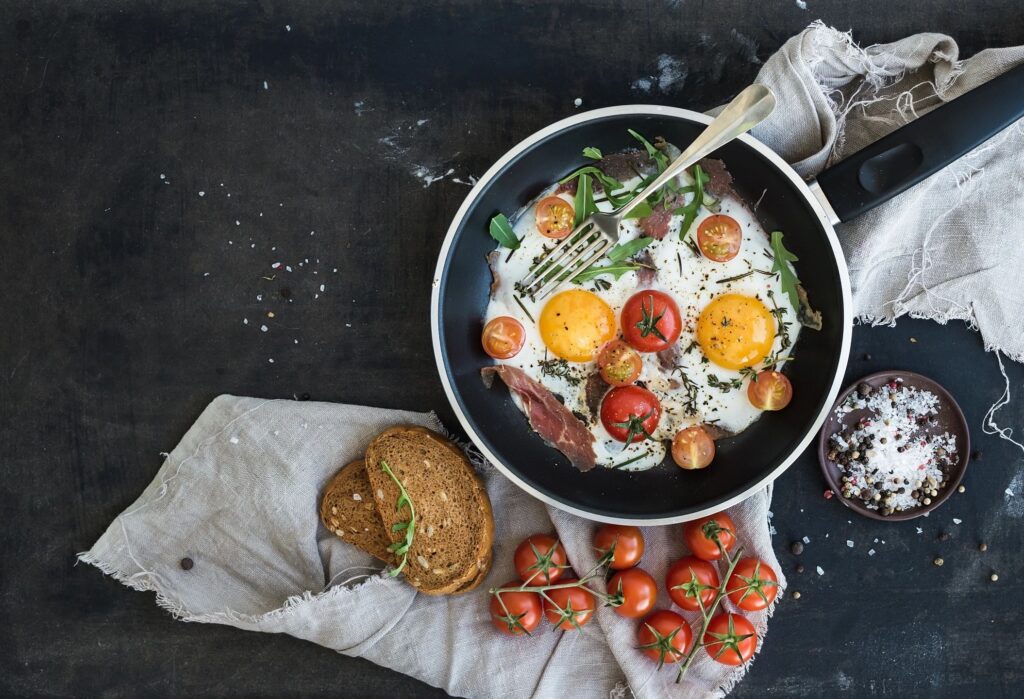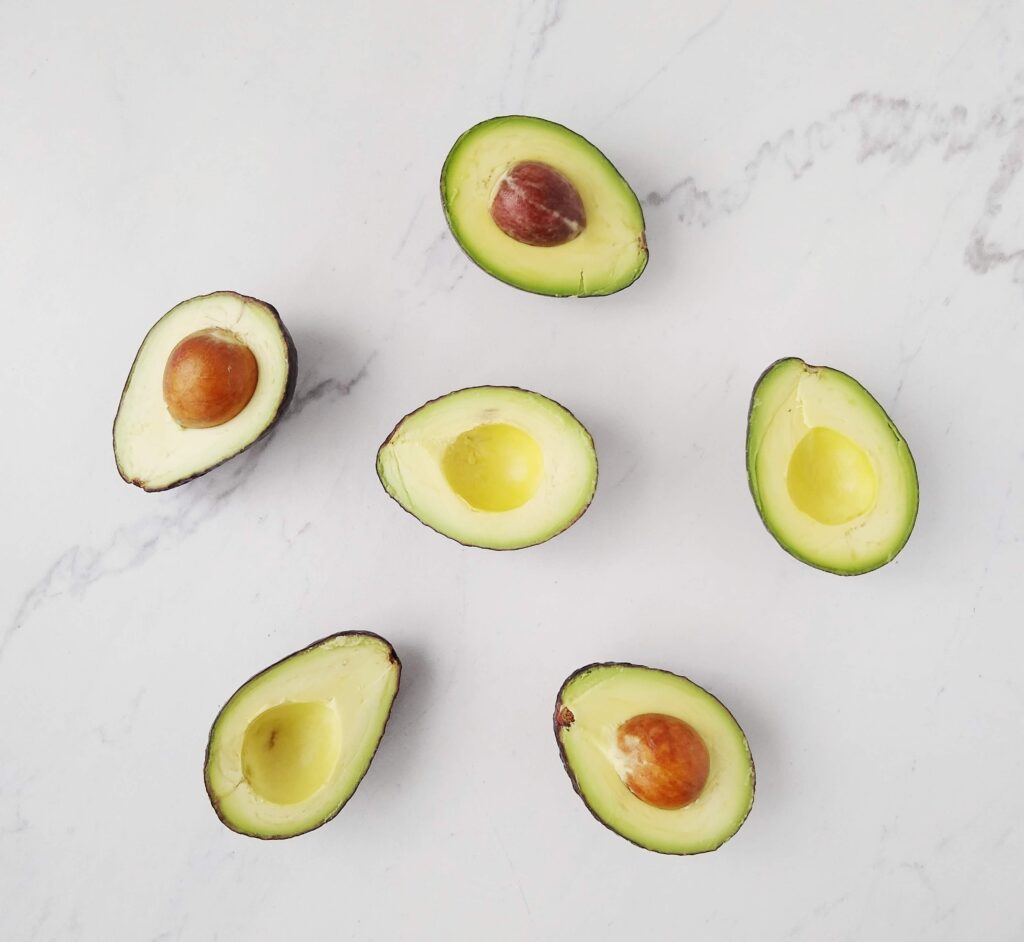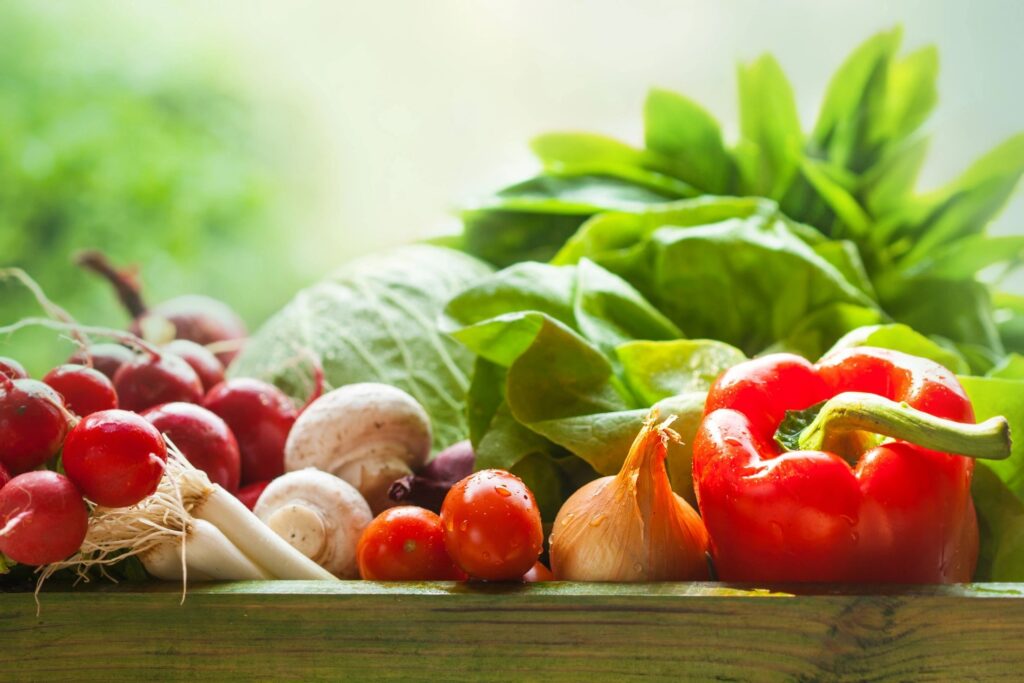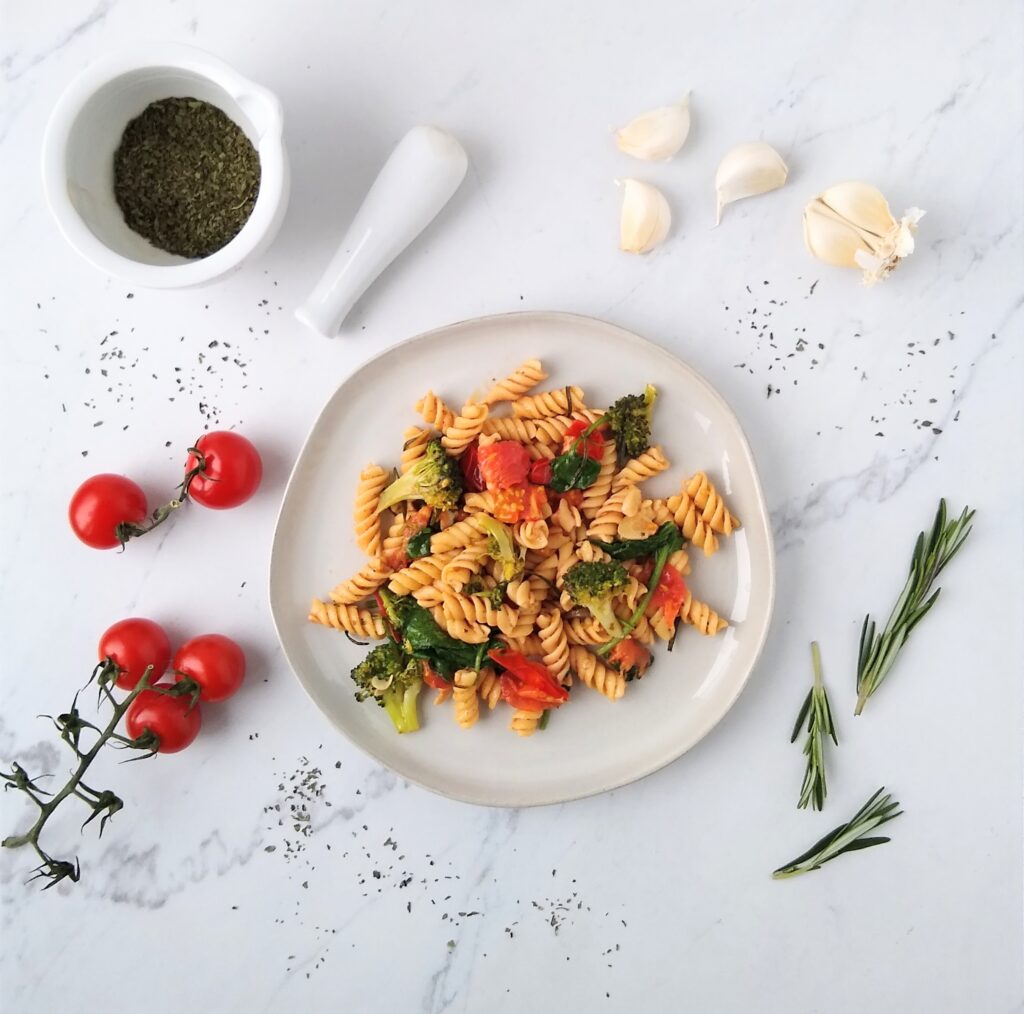How To Make Balanced Meals

When you learn how to make balanced meals, it makes healthy eating easy, enjoyable, and a whole lot less stressful. Balanced meals consist of three main components: protein, healthy fats, and fiber.
Protein

Protein helps fill us up and keep us full due to it’s effect on our hunger hormones. When protein is consumed, the body down regulates hunger hormones, and produces satiety (fullness) hormones. It also slows down the digestion and and absorption of carbohydrates eaten alongside, which keeps blood sugar stable.
This nutrient takes a longer time to digest, which may sound negative, but it’s actually not! When food takes a bit longer to digest, it empties out of the stomach slowly as well, which means we stay full and don’t think about food for hours, rather than feel hungry minutes after eating.
Types of protein-containing foods include:
- meat
- fish
- poultry
- dairy products like cheese, yogurt, and milk
- eggs
- beans
- legumes
- soy (tofu, tempeh, edamame)
- nuts
- seeds
Healthy Fats

Healthy fats also take a longer time to breakdown in our stomachs and help release satiety hormones, again, keeping is fuller for longer. They help blunt the blood sugar response to carbohydrates, which means we also enter the next meal feeling hungry, not “hangry.”
Types of healthy fats can include:
- Avocados & avocado oil
- Cacao nibs
- Chocolate (dark)
- Coconut (flakes, milk)
- Dairy (butter, cheese, full fat yogurt/milk – also have protein)*
- Olives & olive oil
- Nuts (Almonds, cashews, pistachios, walnuts, etc.)
- Seeds (chia, flax, hemp, pumpkin, sunflower, etc.)
*There is some controversy as to whether dairy fat is considered “healthy”, while some research has suggested health benefits to full fat dairy, it has not been sufficient to change guidelines surrounding limiting saturated fats, which can increase both LDL and HDL cholesterol. This is something that ends up being highly individual as some do well with full fat dairy, while others may need to limit this type of fat.
Fiber

Fiber is a type of carbohydrate that takes a long time to break down and keeps us fuller longer. The structure is very complex, in fact, we do not even have the digestive enzymes to break fiber down. Instead, our gut bacteria will break down soluble fiber (a type of fiber), and insoluble fiber helps provide bulk to stool as it does not get fully broken down.
Foods high in fiber also tend to be higher in volume, and when our stomach physically expands, it sends a signal to our brain that we are getting full. This mechanism also tells the body to stop making hunger hormones, start making satiety hormones.
Fibrous foods tend to fill us up physically, while protein and fat keep us full.
For example, if we ate a giant salad with just vegetables, we would feel physically full, and we’d probably stay fuller longer than if we drank a glass of juice due to the fiber content. But, we’d end up feeling hungry again sooner rather than later. If we added dressing (a fat) and chicken (a protein) to that salad, we are more likely to feel full for hours.
Types of fiber-rich foods include:
- Fruits
- Vegetables (starchy & non-starchy)
- Beans (also protein)
- Legumes (also protein)
- Whole grains
Avocados, nuts, seeds, olives, coconut, & chocolate are like bonus fiber-containing foods.They are mainly classified as healthy fats, but also contain fiber: win-win.
How to make a balanced meal

Essentially, to make a balanced meal, you’ll want at least one component from each category. For example, a meal consisting of chicken (protein), broccoli (fiber), and olive oil (healthy fat) has all three components.
This meal, however, may not be completely satisfying, or provide enough energy. If I were eating this meal, I would likely add a starchy fiber, like potatoes or rice. Then, I’d probably have at least some fruit afterwards (another fiber).
An example for breakfast might be whole grain toast (fiber) topped with peanut butter (healthy fat + a little protein) with eggs (protein) and berries (more fiber) on the side.
Another way to look at this is thinking about adding protein, fat, and produce, which ensures we are typically getting some type of fruit and/or vegetable as our fiber. Whole grains are great, but if we only used whole grains as our fiber for each meal, we’d end up missing out on some key vitamins, minerals, and antioxidants that we get from produce.
I usually like to combine both non-starchy fibers like fruit and/or non-starchy vegetables with starchy fibers like grains, beans, and/or starchy vegetables.
Like in the above example, we have a starchy fiber such as whole grain toast and another fiber, like fruit, which is not starchy. Starches tend to be more energy dense and satiating because starch, a type of carb, takes longer to break down than sugar, another type of carb.
What is a starchy vs. non-starchy vegetable?
Good question!
Non-starchy vegetables are those lower in carbohydrates, high in water and fiber. They include foods like:
- Broccoli
- Brussles sprouts
- Beets
- Cauliflower
- Carrots
- Cabbage
- Cucumbers
- Celery
- Eggplant
- Fennel
- Kale
- Kohlrabi
- Mushrooms
- Onion
- Peppers
- Radish
- Rutabaga
- Spinach
- Swiss chard
- Summer squash
- Tomato
- Turnip
- Watercress
- Zucchini
Starchy vegetables are higher in the carbohydrate starch, but still contain fiber. They tend to be denser and creamer. They include foods like:
- Corn
- Cassava (yucca)
- Peas
- Parsnips
- Potatoes (white & sweet)
- Winter squash (acorn, butternut, pumpkin, etc.)
Examples of balanced meals
Making balanced meals can certainly take some practice, especially as you get to learn which foods fit best in each category. Here are some more examples to get you started!
- Overnight oats (fiber) with chia seeds (fiber and healthy fat), greek yogurt (protein), and berries (fiber)
- Greek yogurt parfait with yogurt (protein), almonds (healthy fat), banana (fiber), and granola (fiber)
- Sandwich with whole grain bread (fiber), turkey (protein), avocado (healthy fat) and carrot sticks on the side (fiber)
- Pasta dish with pasta (could be a fiber if whole grain or bean-based), zucchini and cherry tomatoes (fiber), olive oil (healthy fat), and shrimp (protein)
- Tofu stir-fry with tofu (protein), broccoli, peppers, carrots (fibers), white rice (not a ton of fiber, but that’s okay because we have the veggies), and olive oil (healthy fat)
Need more help with this? Work with me one on one! I will help you create balanced meals that work for you and your specific needs and goals.




Leave a Reply